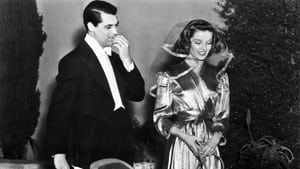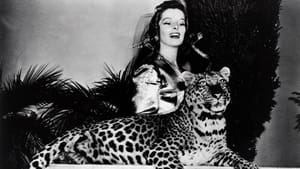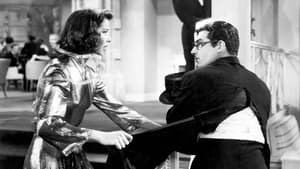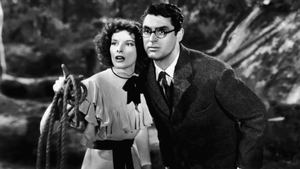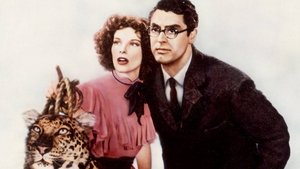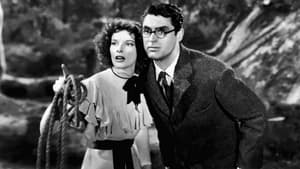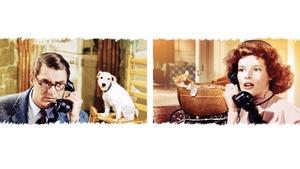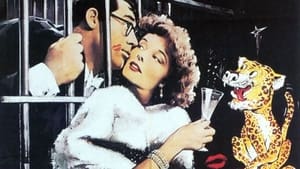Video Sources 0 Views
- Watch trailer
- Bringing Up Baby 1938 Colorized

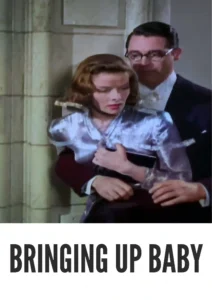
Synopsis
Table of Contents
ToggleA Leopard, a Dinosaur Bone, and Hilarious Chaos: Bringing Up Baby (1938) in Stunning Color

Step into the madcap world of Bringing Up Baby, a quintessential screwball comedy from 1938, now beautifully colorized for a viewing experience that pops! Starring Cary Grant and Katharine Hepburn, this film, directed by Howard Hawks, is a whirlwind of mistaken identities, chaotic situations, and blossoming romance. Perfect for classic film buffs and anyone in need of a good laugh, this HD download brings a timeless piece of comedic genius to your screen. Other titles include Bringing Up Baby.
Bringing Up Baby Storyline: A Comedy of Errors
Bringing Up Baby tells the story of David Huxley (Cary Grant), a mild-mannered paleontologist on the verge of a career-defining discovery. His carefully ordered life is thrown into complete disarray when he meets the impulsive and eccentric Susan Vance (Katharine Hepburn).Susan’s pet leopard, Baby, and a missing intercostal clavicle from a Brontosaurus skeleton become the catalysts for a series of increasingly absurd and hilarious events. David finds himself entangled in Susan’s chaotic world, dealing with escaped leopards, mistaken identities, and a host of quirky characters. As they navigate these challenges, an undeniable attraction sparks between David and Susan, leading to unexpected romantic entanglements. The film culminates in a series of uproarious escapades, solidifying Bringing Up Baby as a comedic masterpiece.
Movie Cast
The film features a stellar cast of actors who bring this comedic story to life:
- Cary Grant as Dr. David Huxley
- Katharine Hepburn as Susan Vance
- Charles Ruggles as Major Horace Applegate
- Walter Catlett as Constable Slocum
- May Robson as Aunt Elizabeth Random
Movie Genre
Bringing Up Baby firmly resides in the screwball comedy genre, characterized by its fast-paced dialogue, absurd situations, and unconventional romance. Its witty banter and farcical plot make it a standout example of this comedic style.
Historical Context: The Golden Age of Screwball Comedy
Released in 1938, Bringing Up Baby emerged during the golden age of screwball comedy, a genre that flourished in Hollywood during the 1930s and 1940s. This period was marked by economic hardship and social upheaval, and screwball comedies provided audiences with an escape from the realities of everyday life. Bringing Up Baby, with its witty humor and lighthearted tone, became a hit and remains a beloved example of the era’s cinematic trends.
Colorization Details
This colorized version of Bringing Up Baby has been meticulously restored using modern digital techniques, enhancing the visual appeal while preserving the film’s original charm and comedic timing. The colorization process involved carefully analyzing the grayscale tones of the original black and white footage and assigning appropriate colors to each scene. While the specific software used remains proprietary, the techniques employed included advanced algorithms for color palette selection and image enhancement. This painstaking process breathes new life into the characters and settings, making the story even more engaging for modern audiences.
Technical Details
- Director: Howard Hawks
- Screenplay: Dudley Nichols, Hagar Wilde
- Story by: Hagar Wilde
- Cinematography: Russell Metty
- Edited by: George Hively
- Production Company: RKO Radio Pictures
- Distributed by: RKO Radio Pictures
- Runtime: 102 minutes
Technical Specifications
- Download Format: MP4
- Resolution: HD (1080p)
- Compatibility: Compatible with most devices, including smartphones, tablets, computers, and smart TVs.
Reviews and Critical Reception
Bringing Up Baby is celebrated as a classic of the screwball comedy genre, praised for its witty dialogue, impeccable comedic timing, and the sparkling chemistry between Cary Grant and Katharine Hepburn. Though it was not an immediate box-office success, its reputation has grown over the years, and it is now considered one of the greatest comedies ever made.
FAQs
- Q: What is Bringing Up Baby about?
- A: Bringing Up Baby is a screwball comedy about a paleontologist whose life is turned upside down by an eccentric socialite and her pet leopard.
- Q: Is Bringing Up Baby (1938) a well-known classic film?
- A: Yes, Bringing Up Baby is a highly regarded and beloved classic of the screwball comedy genre.
- Q: Is this version of Bringing Up Baby colorized?
- A: Yes, this version has been professionally colorized to enhance the viewing experience.
- Q: What makes Bringing Up Baby so special?
- A: Bringing Up Baby is known for its fast-paced humor, witty dialogue, and the incredible chemistry between its stars, Cary Grant and Katharine Hepburn.
- Q: What is the download format?
- A: The download format is MP4, which is compatible with most devices.
- Q: What resolution is the download?
- A: The resolution is HD (1080p), providing a high-quality viewing experience.
Download Now in HD!
Watch Bringing Up Baby Today!

